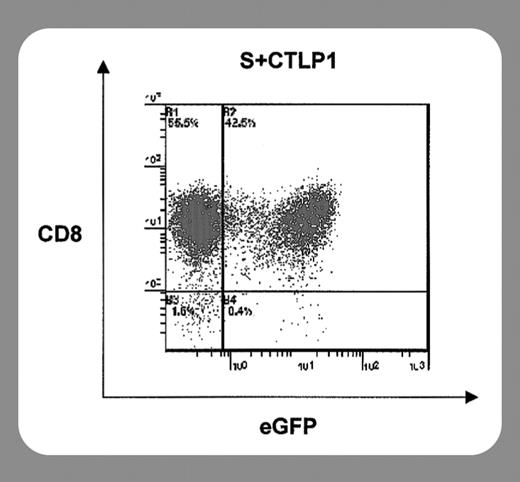IMMUNOBIOLOGY
X-linked lymphoproliferative disease (XLP) is a rare immunodeficiency characterized by a diverse spectrum of manifestations, including fulminant infectious mononucleosis (FIM), lymphoma, and abnormal immunoglobulin synthesis, similar to common variable immunodeficiency (CVID).1 Although Epstein-Barr virus (EBV) infection is not necessary to manifest symptoms of XLP, the aberrant immune response to EBV is a major cause of morbidity and mortality in infected males.2 The defective protein is a very small (128 amino acids) cytoplasmic molecule consisting essentially of an src homology 2 (SH2) domain (96 amino acids).3 How this small, coadaptor protein can be responsible for such diversity and severity of clinical manifestations remains a mystery.
In the presence of a defective protein, the binding of SH2 domain–containing protein tyrosine phosphatase to signaling lymphocyte activation molecule (SLAM) or CD150 is unabated, which is hypothesized to result in uncontrolled phosphatase activity at the cell membrane and T-cell activation, and hence the name SLAM-associated protein, or SAP.3 Evidence to support this hypothesis comes from SAP knock-out mice, which develop a fulminant T-cell lymphoproliferative process with increased numbers of T helper 1 (Th1) cells and γ-interferon (γ-IFN) production following lymphocytic choriomeningitis virus infection, reminiscent of FIM of XLP patients.4
Sharifi and colleagues (page 3821) have for the first time studied in vitro the T-cell responses of 3 XLP males to various stimuli, including autologous EBV-transformed lymphoblastoid cell lines (EBV-LCLs). XLP cytotoxic T lymphocytes have decreased cytotoxic activity against EBV-LCLs compared with healthy controls. XLP T-cell lines were found to be phenotypically similar to healthy controls, but both XLP and control T cells have low expression of SLAM and high expression of 2B4 (CD244). Despite XLP T cells producing normal amounts of γ-IFN in response to mitogen, CD28, CD3/CD28, SLAM, and CD3/SLAM, XLP T cells had decreased γ-IFN production in response to 2B4, CD3/2B4, and EBV-LCLs. These results suggest that in humans 2B4/SAP interactions may be more important than SLAM/SAP in T-cell responses to EBV.
Another function of SAP appears to be in controlling or maintaining immunologic memory. There is growing evidence that memory responses, humoral and cellular, are impaired in SAP knock-out mice and XLP patients.5,6 Purtilo et al's first description of the disease noted the progressive nature of the immunodeficiency in XLP.1 This is another example of an “experiment of nature,” where this small coadaptor molecule can have profound consequences (both immediate and long term) on the immune system's ability to respond adequately to EBV, probably other infections, and perhaps lymphoma. Sharifi et al have shown that T-cell responses to EBV can be restored by retroviral gene transfer of a normal SAP gene into deficient T cells. However, before therapeutic efforts can be undertaken safely, much more understanding of the regulation of this protein and its effect on immunologic responses are required.


This feature is available to Subscribers Only
Sign In or Create an Account Close Modal